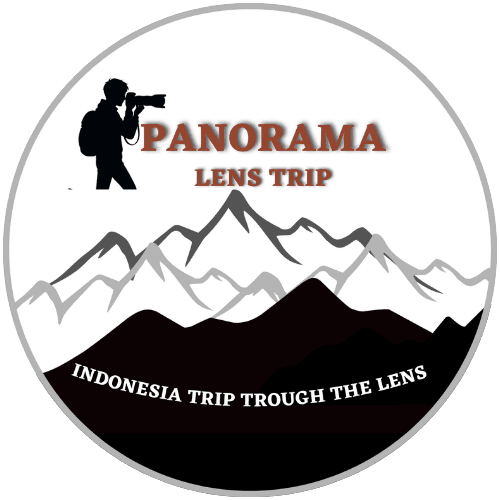Mount Bromo Milky Way Photography – Ever dreamed of capturing the stars dancing above an active volcano? Mount Bromo in East Java, Indonesia, isn’t just a dramatic landscape—it’s a night sky photographer’s paradise. With minimal light pollution, high-altitude viewpoints, and epic foregrounds, Bromo offers an unrivaled opportunity to snap the Milky Way in all its glory.
Best Time to Capture the Milky Way Over Mount Bromo
Milky Way Visibility Calendar
The Milky Way is best visible from April to October, with peak visibility between midnight and 4 AM. During this time, the Galactic Core—the brightest and most photogenic part of the Milky Way—is above the horizon.
Seasonal Considerations
Go during dry season (May to September). Clear skies are crucial, and during this period, you’ll likely avoid the heavy fogs and rainstorms that plague the wet months.
Ideal Weather and Moon Phase Conditions
Check for new moon phases. The darker the night, the more vibrant the stars. Use apps like PhotoPills or Stellarium to plan around moonlight.
Best Locations Around Mount Bromo for Milky Way Shots
Penanjakan Viewpoint
These are the most famous sunrise spots, but they also double as great Bromo Milky Way vantage points before dawn.
King Kong Hill
A lesser-known gem with fewer crowds and a wider view of the Bromo crater.
Sea of Sand (Pasir Berbisik)
The open plain offers minimal obstructions, perfect for capturing wide-angle shots of the sky.
Widodaren Valley
A favorite among photographers for its unique silhouette foregrounds and dramatic ridgelines.
Essential Gear for Milky Way Photography
Best Cameras for Low-Light Shooting
Full-frame DSLRs or mirrorless cameras are best, like the Sony A7 series, Canon EOS R, or Nikon Z series.
Recommended Lenses for Astrophotography
Go wide and fast—lenses like 14mm f/2.8, 24mm f/1.4, or 35mm f/1.8 work beautifully.
Tripod, Remote Shutter, and Other Tools
You’ll need a sturdy tripod, a remote shutter release, and extra batteries. Cold mountain nights drain power fast.
Camera Settings for Stunning Results
ISO, Aperture, and Shutter Speed
- ISO: 1000–2000
- Aperture: f/1.8 or wider
- Shutter Speed: 15–25 seconds (use the 500 rule for guidance)
White Balance and Focus
Use manual focus—set it to infinity and adjust slightly. White balance can be set to around 3800K for a neutral sky.
Shooting in RAW Format
RAW gives you the flexibility to recover shadows and adjust tones without losing quality.
Planning Your Night Shoot at Mount Bromo
Arriving Early and Scouting the Location
Visit the area in daylight to choose your spot, mark your composition, and set up before it gets dark.
Safety Tips for Night Shoots
- Wear warm layers
- Bring a flashlight or headlamp
- Watch your step—some cliffs are unguarded
Respecting Local Customs and Nature
Avoid littering and loud noise. Many locals consider Mount Bromo a sacred space.
Editing Your Milky Way Photos
Post-Processing Basics
Adjust contrast, clarity, and exposure. Use masking to separate the sky from the land.
Recommended Software
Adobe Lightroom, Photoshop, and DxO PureRAW are go-to tools for astrophotographers.
Light Pollution and Color Correction
Use the dehaze tool, and adjust white balance to remove the yellow or blue tint.
Tips from Professional Astrophotographers
How They Plan Their Shoots
They use apps, study maps, and check cloud forecasts obsessively. Planning is everything.
Common Mistakes to Avoid
- Shaky tripod
- Wrong focus
- Forgetting to charge batteries
- Using too high ISO (causes grain)
Creative Techniques
Try star trails, stacking images, or timelapses to add a dynamic element to your shots.
Challenges You Might Face
Weather and Clouds
Cloud cover can ruin your night. Always have a backup night if possible.
Light Pollution from Nearby Villages
Stay away from village lights and use hoods or shields to block stray light.
Equipment Issues
Always double-check your gear before heading out. Bring backups for essential items.
Joining a Bromo Milky Way Photography Tour
What’s Included in a Photography Tour
- 4WD Jeep transportation
- Photography guide
- Tripod rentals
- Hot drinks/snacks
Benefits of Joining a Guided Experience
Guides know the terrain and the best, secret spots—plus, you won’t get lost in the dark.
Legal and Ethical Consideration
Permits and Local Regulations
Foreigners need to pay an entrance fee to Bromo Tengger Semeru National Park. No specific permit is needed for photos.
Responsible Tourism and Environmental Respect
Don’t trample vegetation, avoid off-path areas, and always take your trash back.
Personal Experience: A Night Under the Stars at Bromo
My first attempt was nerve-wracking, but magical. Standing on King Kong Hill, watching the stars wheel above Mount Bromo, I felt tiny—like I was in a dream. The photo? Not perfect. But the memory? Unforgettable.
Conclusion
Mount Bromo is more than a destination—it’s a cosmic stage where stars perform nightly shows. With the right planning, gear, and mindset, you can capture images that aren’t just photos—they’re stories of the universe frozen in time.
So what are you waiting for? Pack your bag, charge your batteries, and get ready to shoot the stars.
FAQs
1. Is Mount Bromo safe for night photography?
– Yes, but it’s essential to stick to known paths, carry a flashlight, and go with a guide if unsure.
2. Can I see the Milky Way without a camera at Bromo?
– Absolutely! During clear nights, you can see it with the naked eye.
3. Do I need a permit for astrophotography at Bromo?
– No special permit is required, but you must pay the national park entrance fee.
4. How cold does it get at night on Mount Bromo?
– Temperatures can drop to 5°C or lower—bring warm clothing. fly a drone at Bromo or Tumpak Sewu?
5. What’s the best app to track Milky Way visibility?
PhotoPills, Stellarium, and Sky Guide are highly recommended.





[…] photographers, this combination of light, mist, and volcanic landscape is a dream canvas. No wonder people from […]
[…] Read more : How to get stunning Milkyway photography shots […]